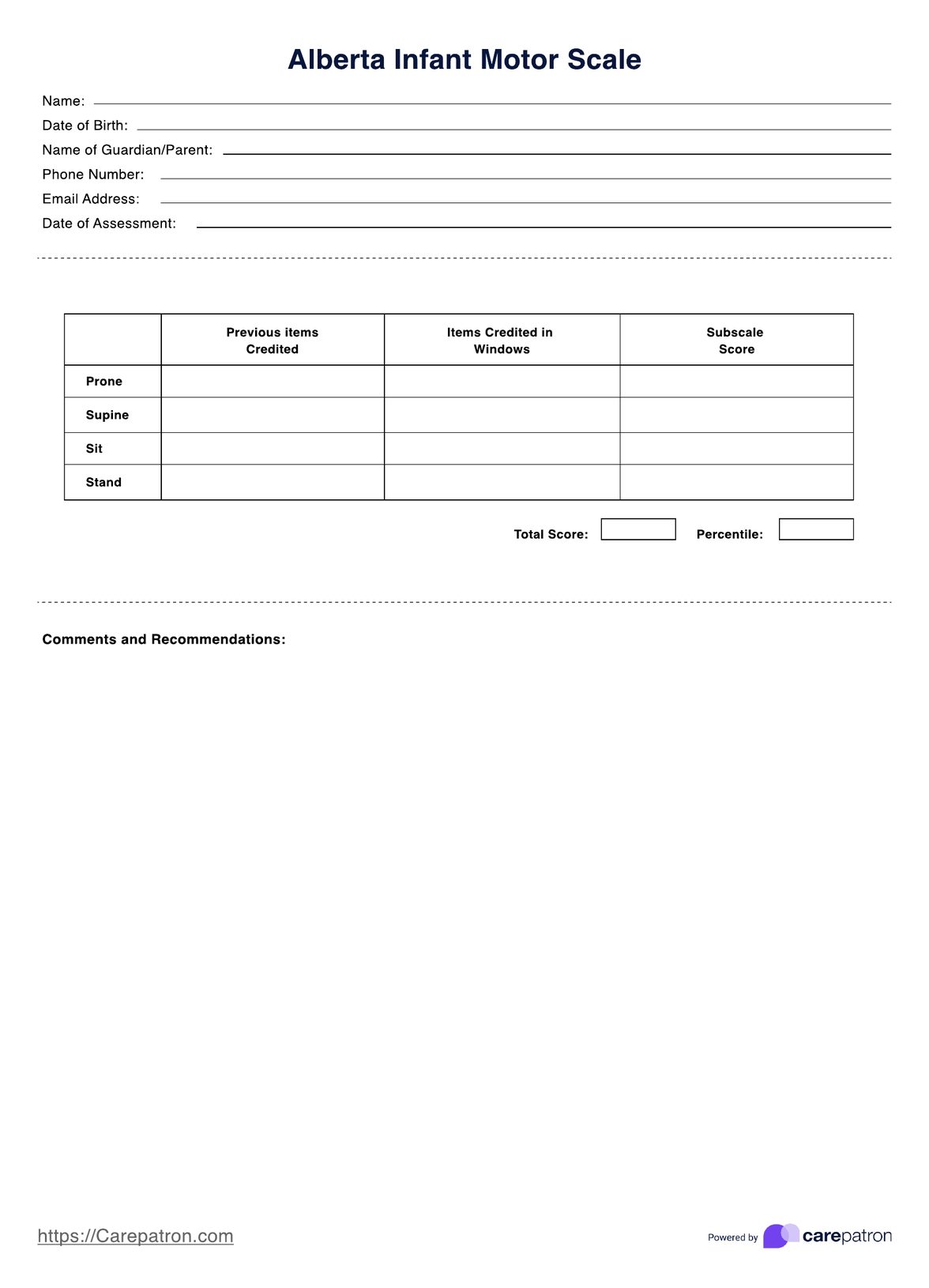The AIMS test template should be administered by a trained healthcare professional, such as a physical therapist, occupational therapist, or pediatrician.

AIMS Scale
Assess infant motor development with our Alberta Infant Motor Scale template. Streamline evaluations and track progress effectively.
AIMS Scale Template
Commonly asked questions
No, the AIMS test template is not a diagnostic tool but rather a screening tool to assess the motor development of infants. Healthcare professionals should use clinical judgment to interpret the results and determine appropriate interventions.
The frequency of administering the AIMS test template may vary depending on the infant's age, developmental stage, and any underlying medical conditions. Healthcare professionals should follow established guidelines and recommendations for administering the assessment.
EHR and practice management software
Get started for free
*No credit card required
Free
$0/usd
Unlimited clients
Telehealth
1GB of storage
Client portal text
Automated billing and online payments











